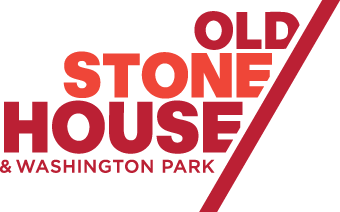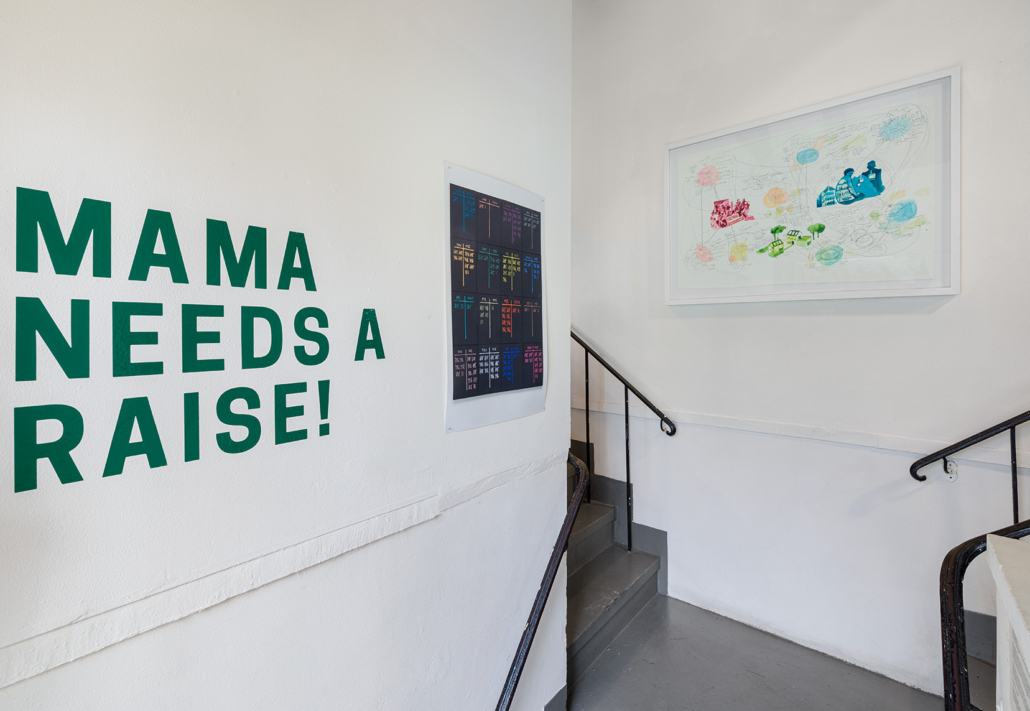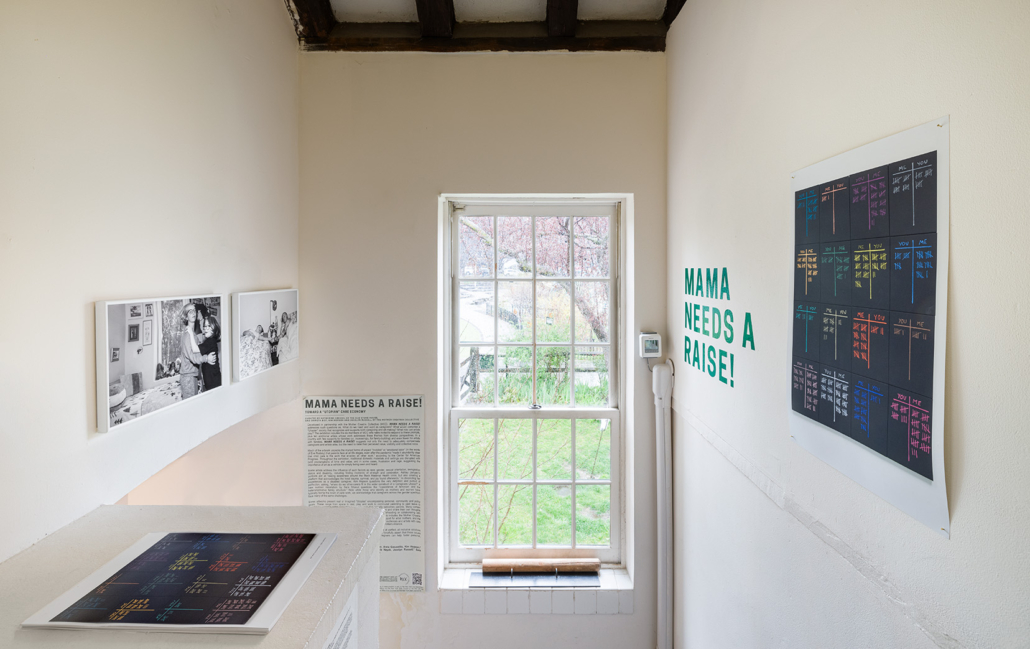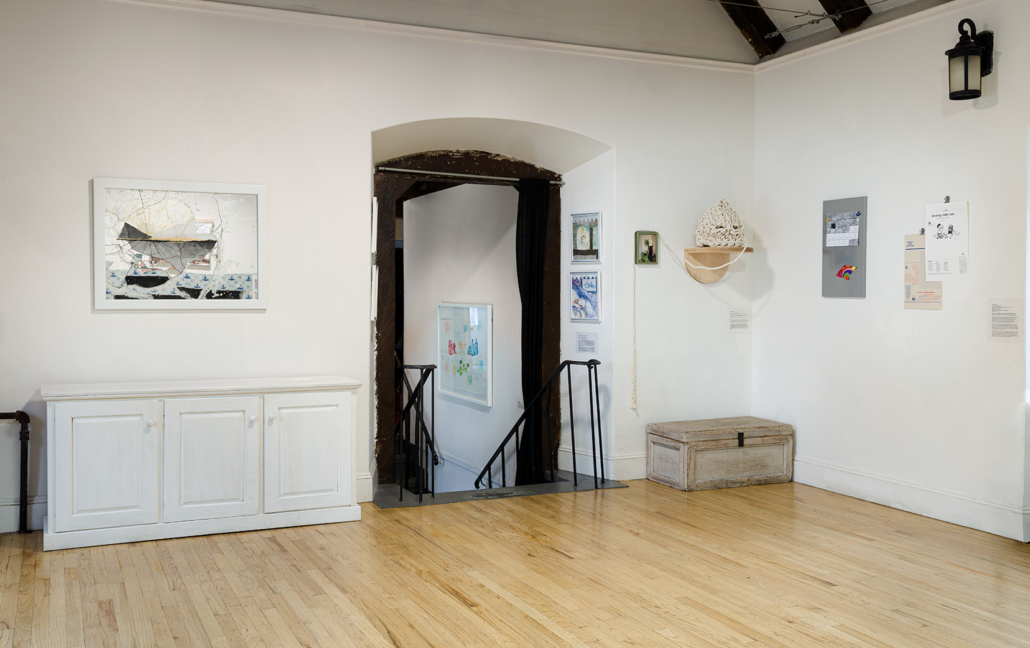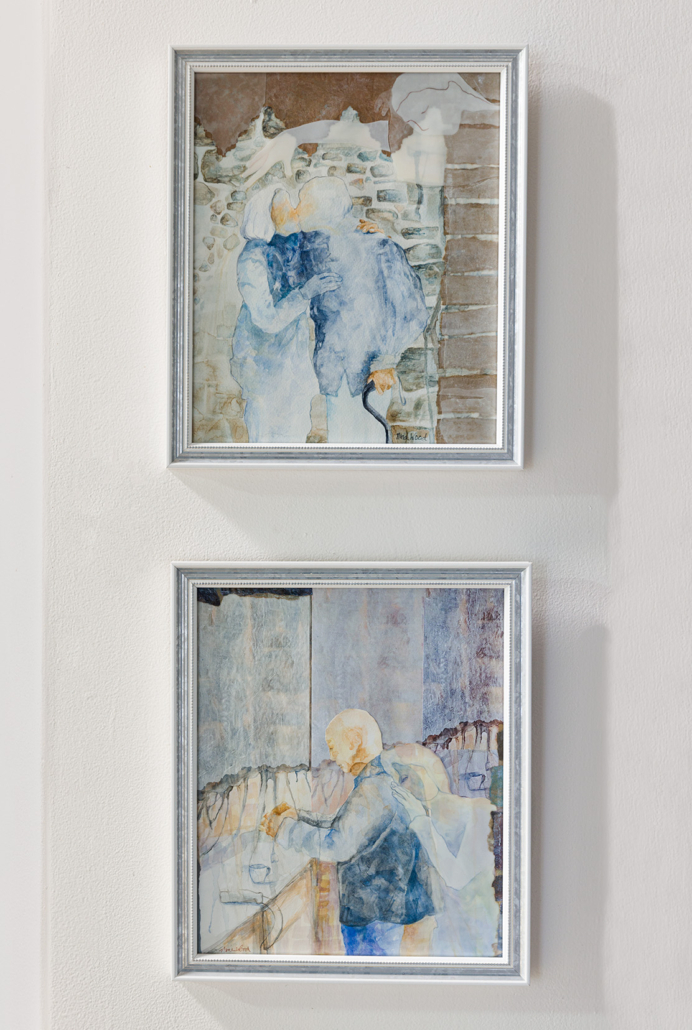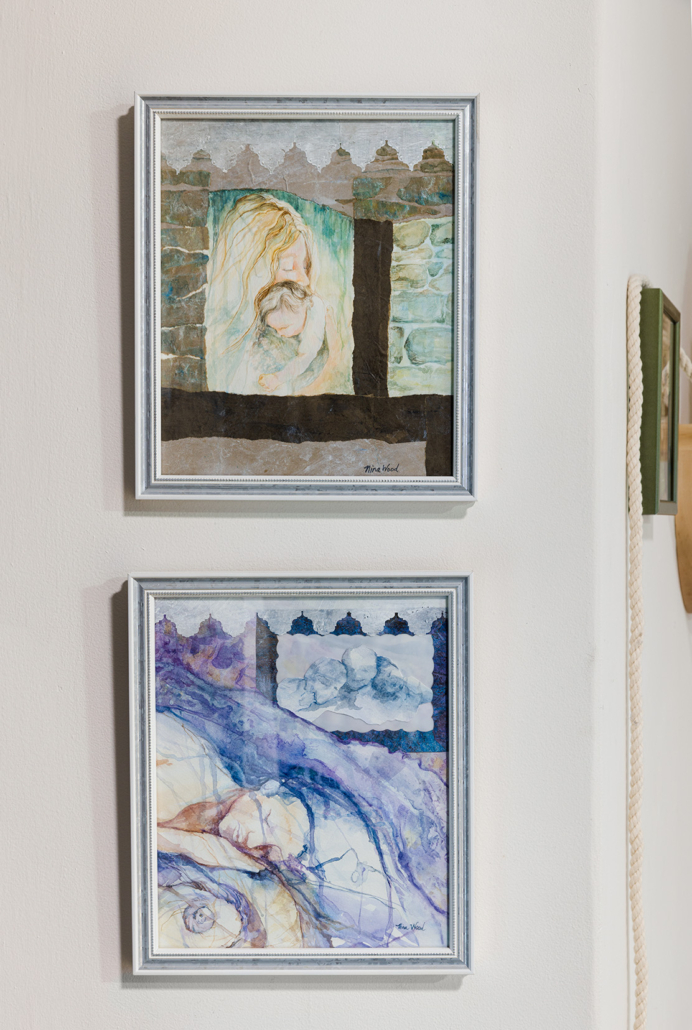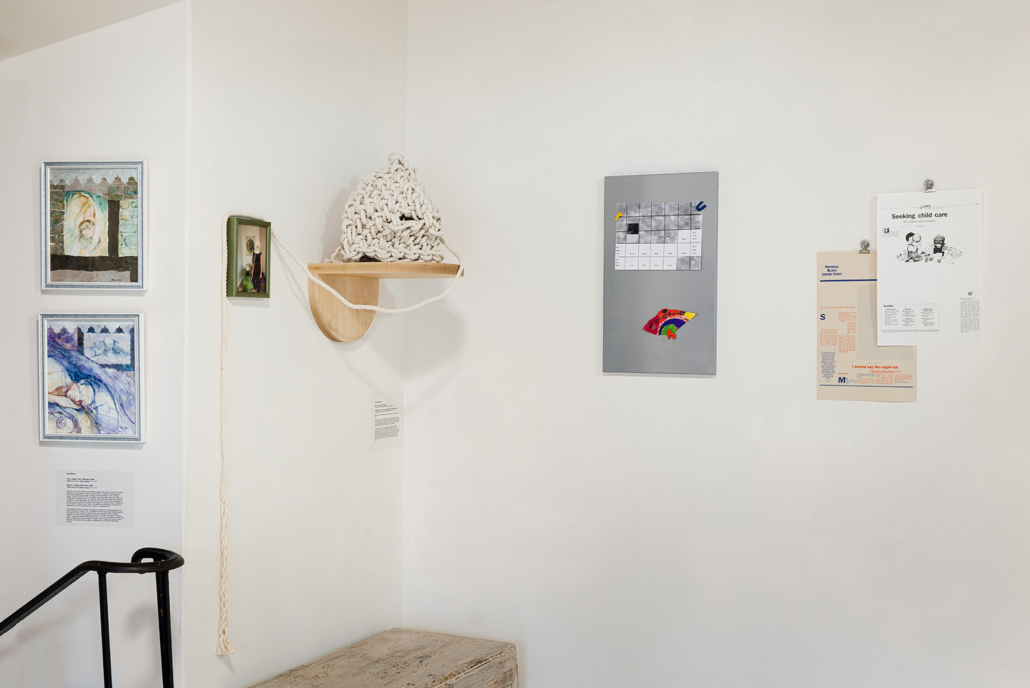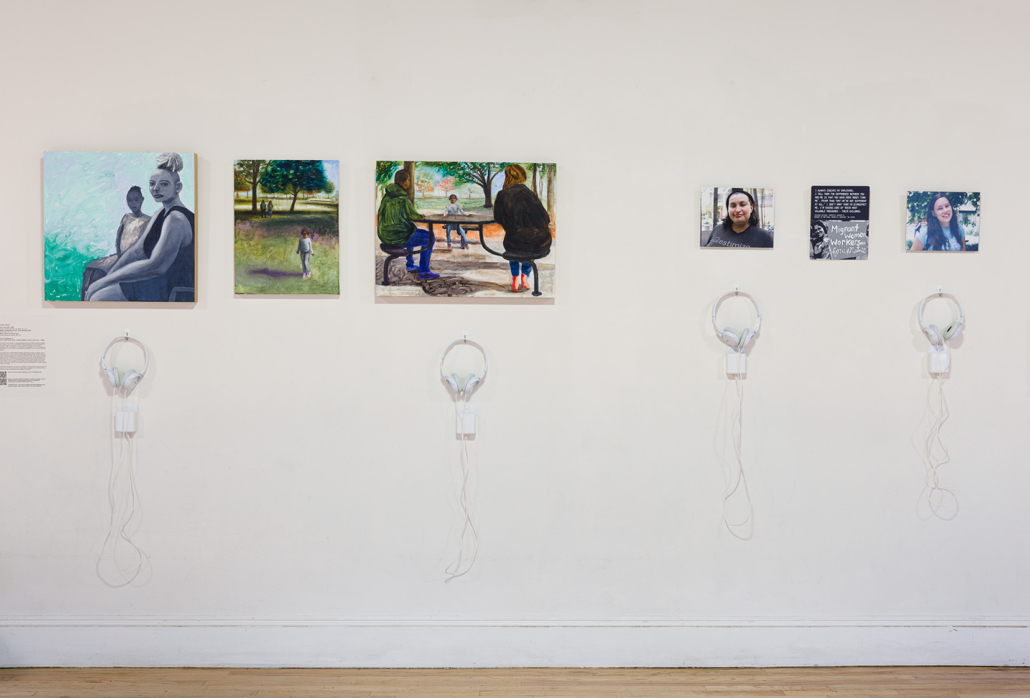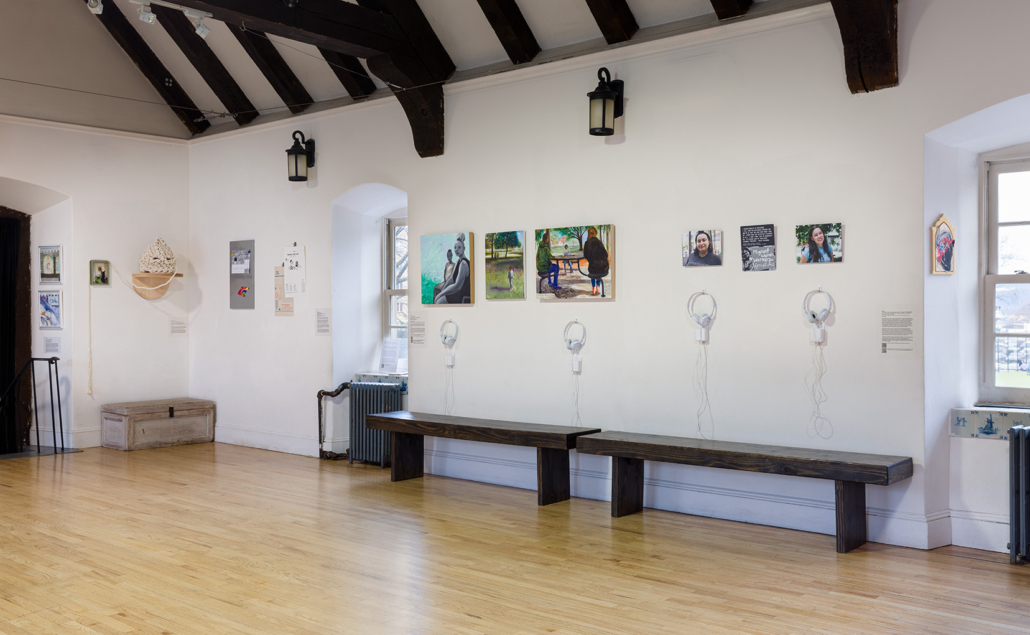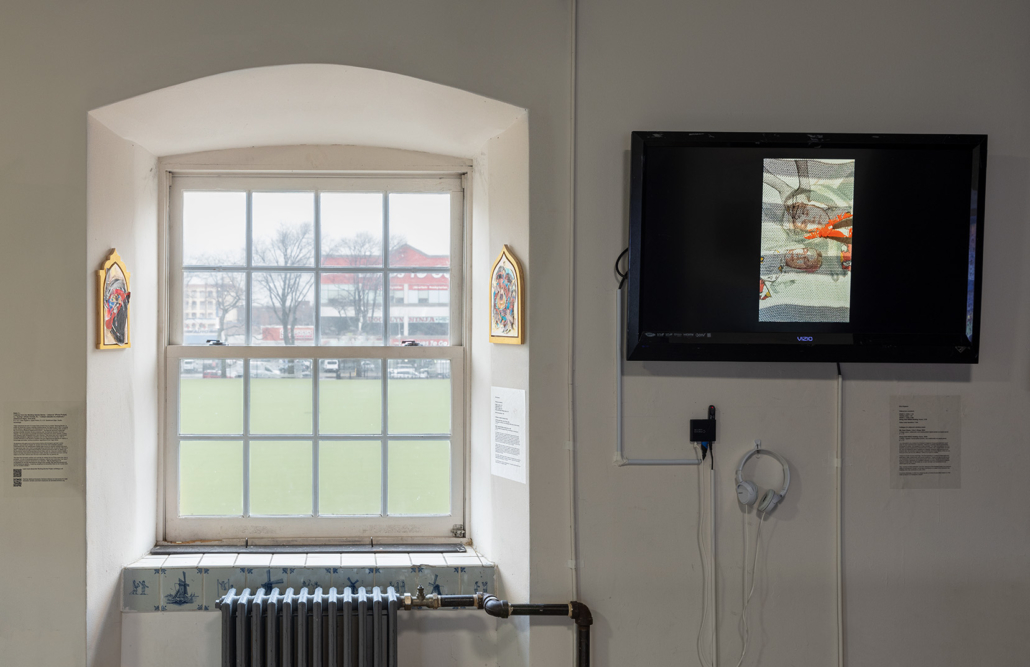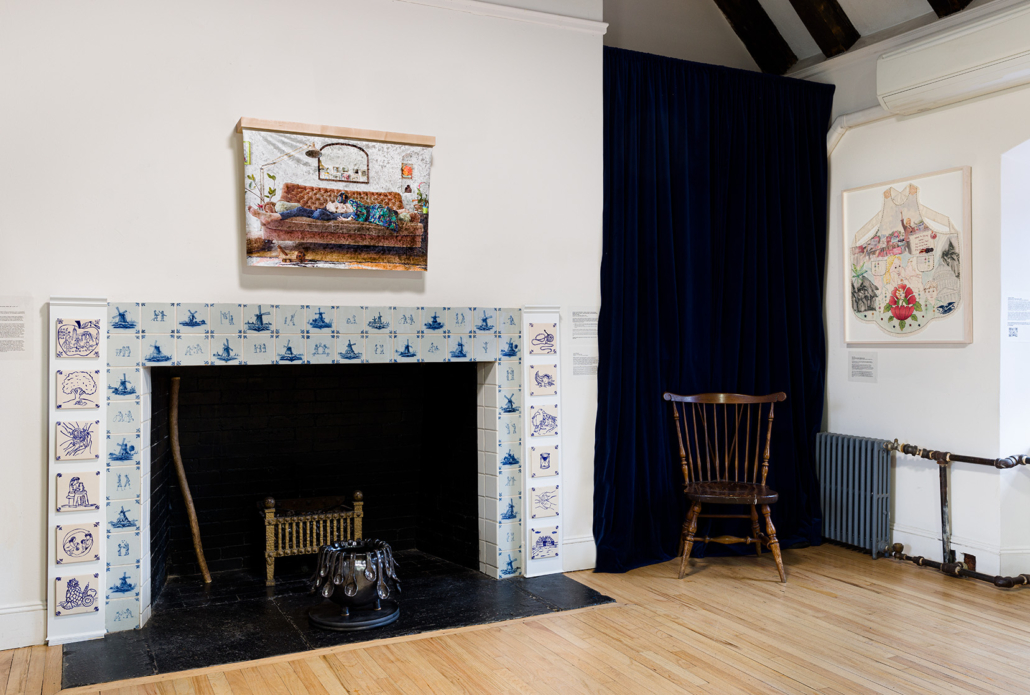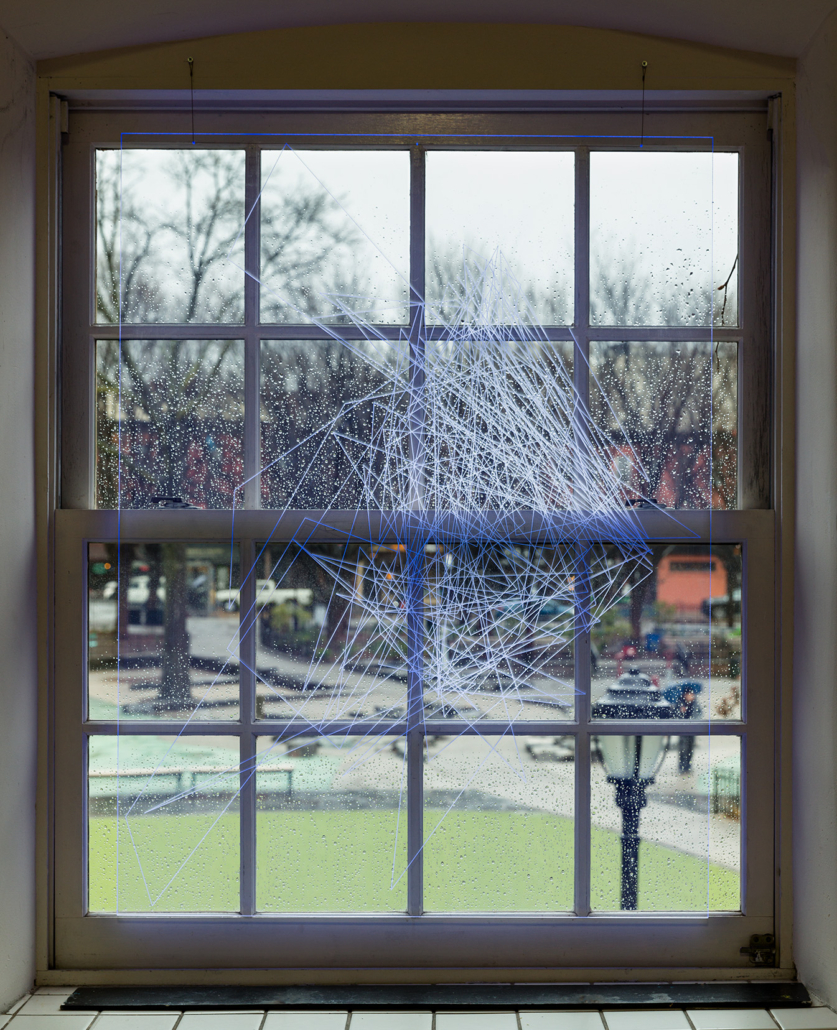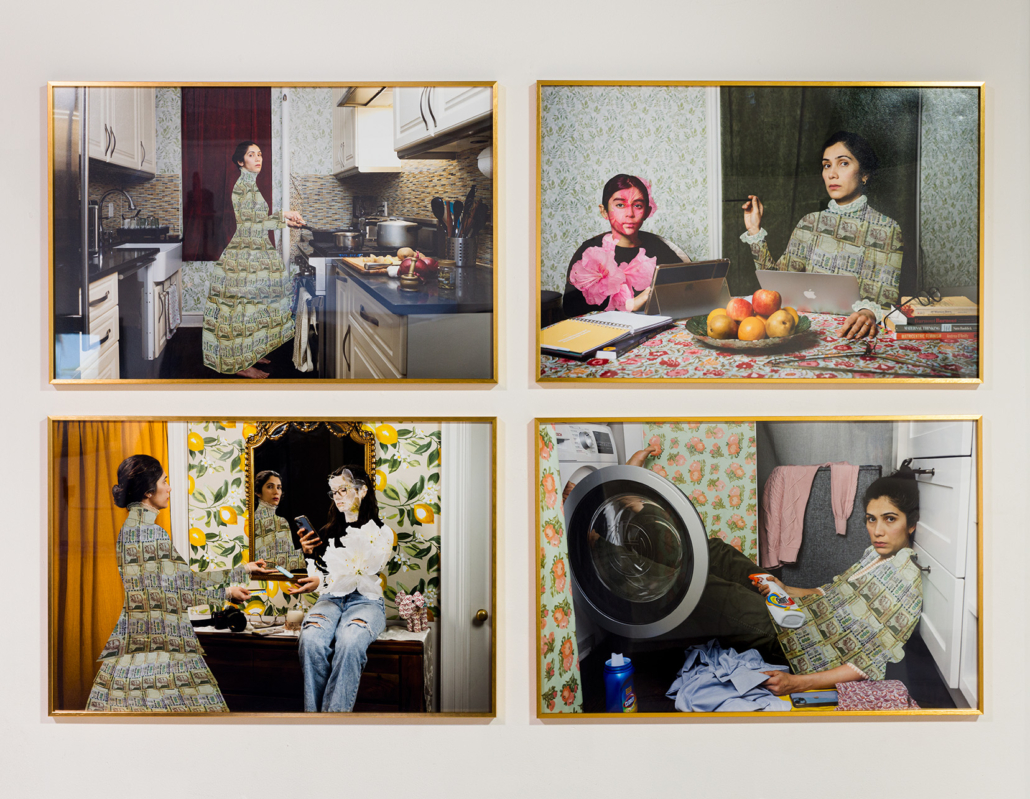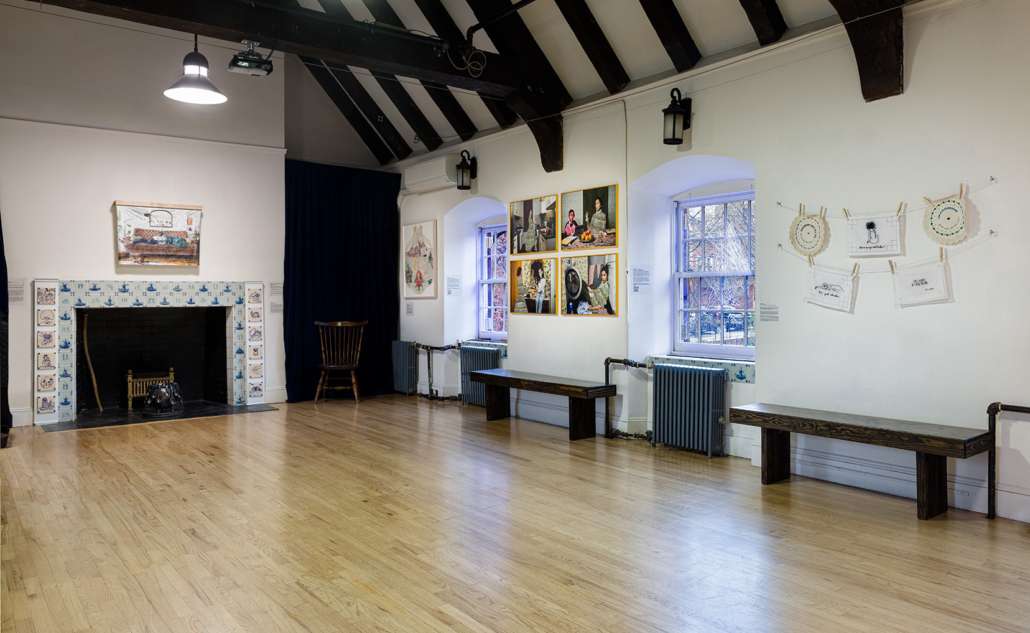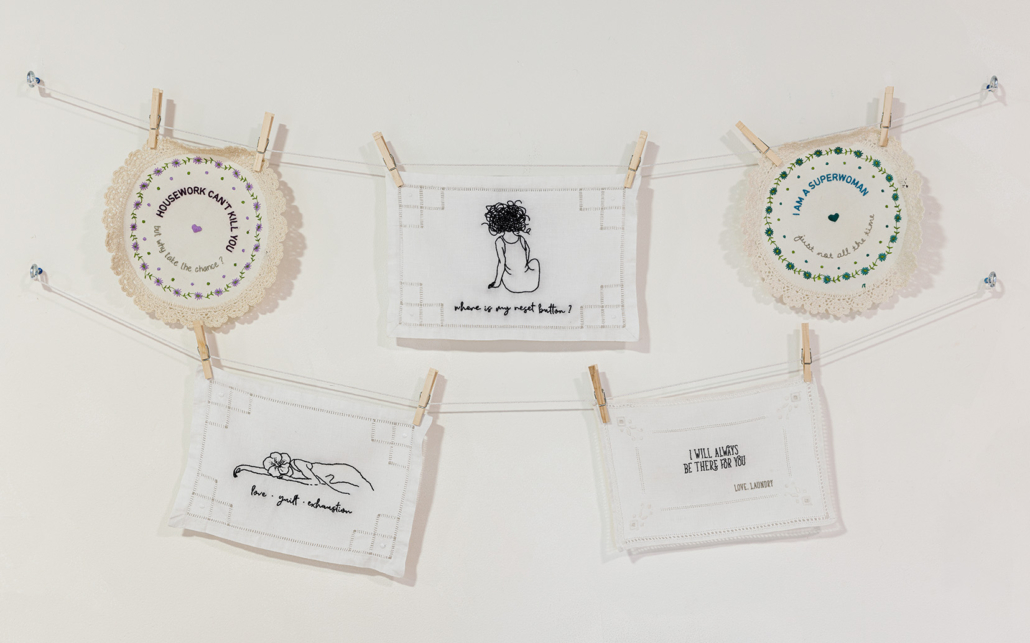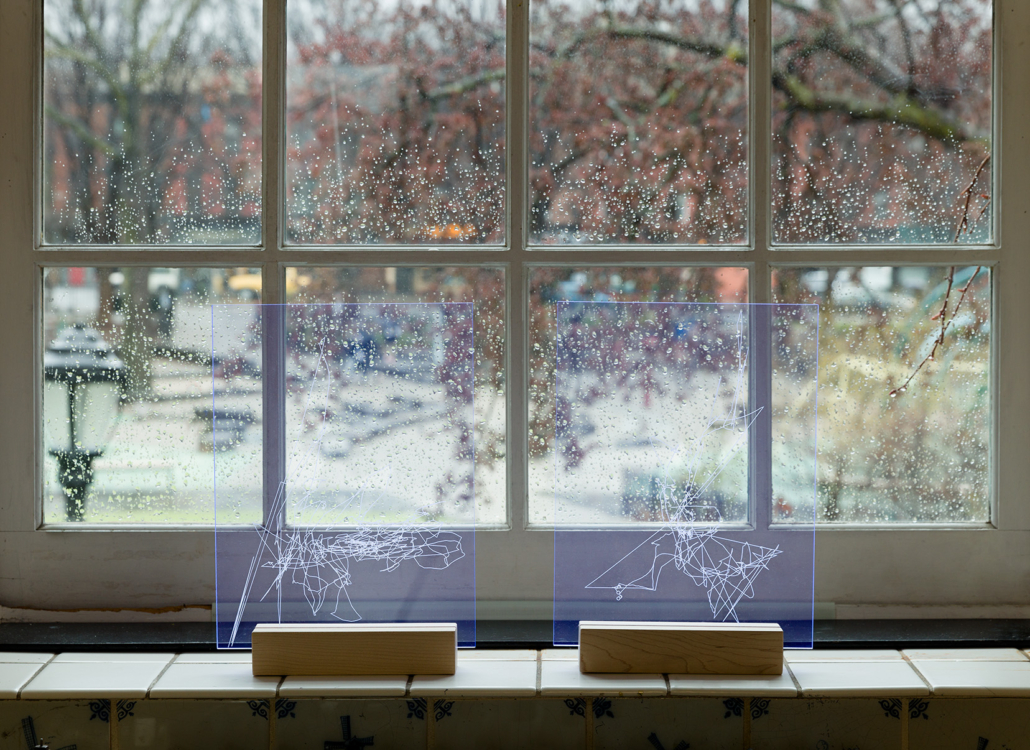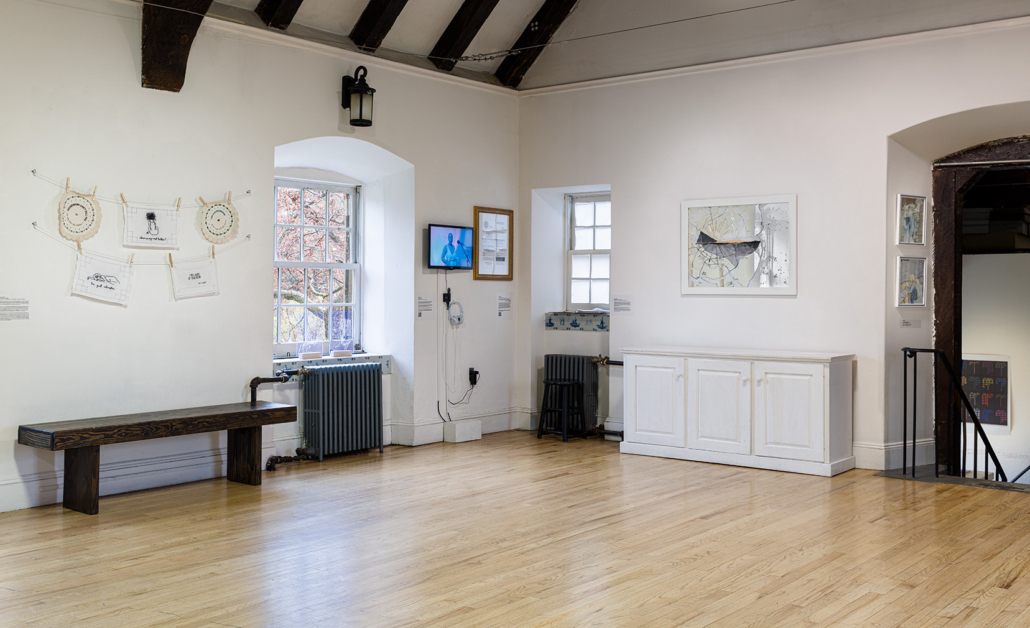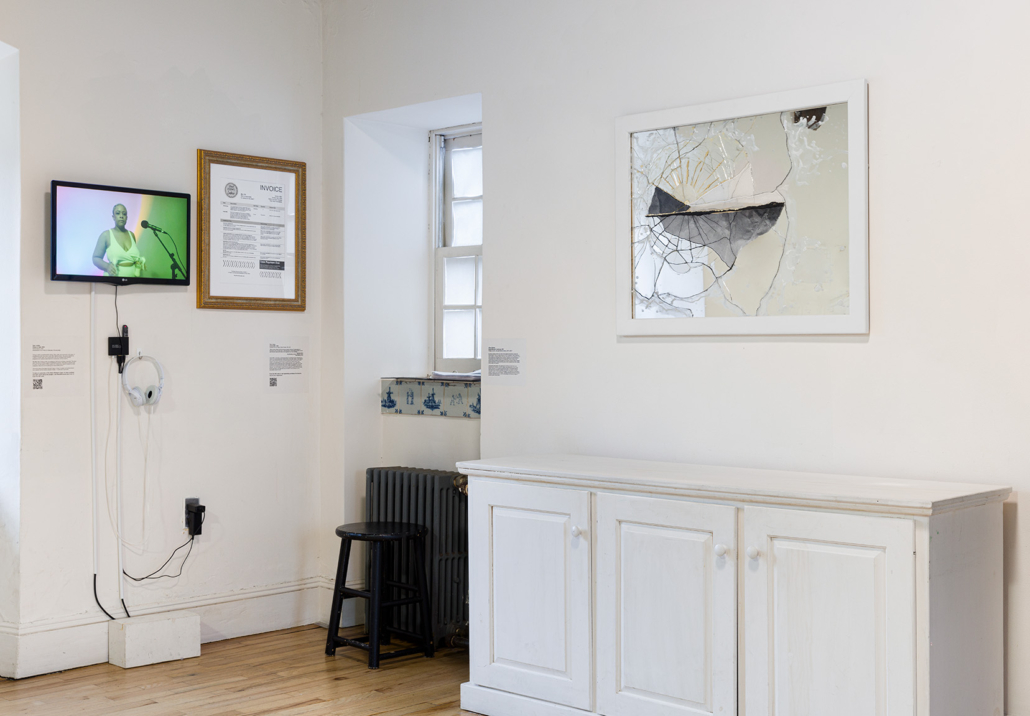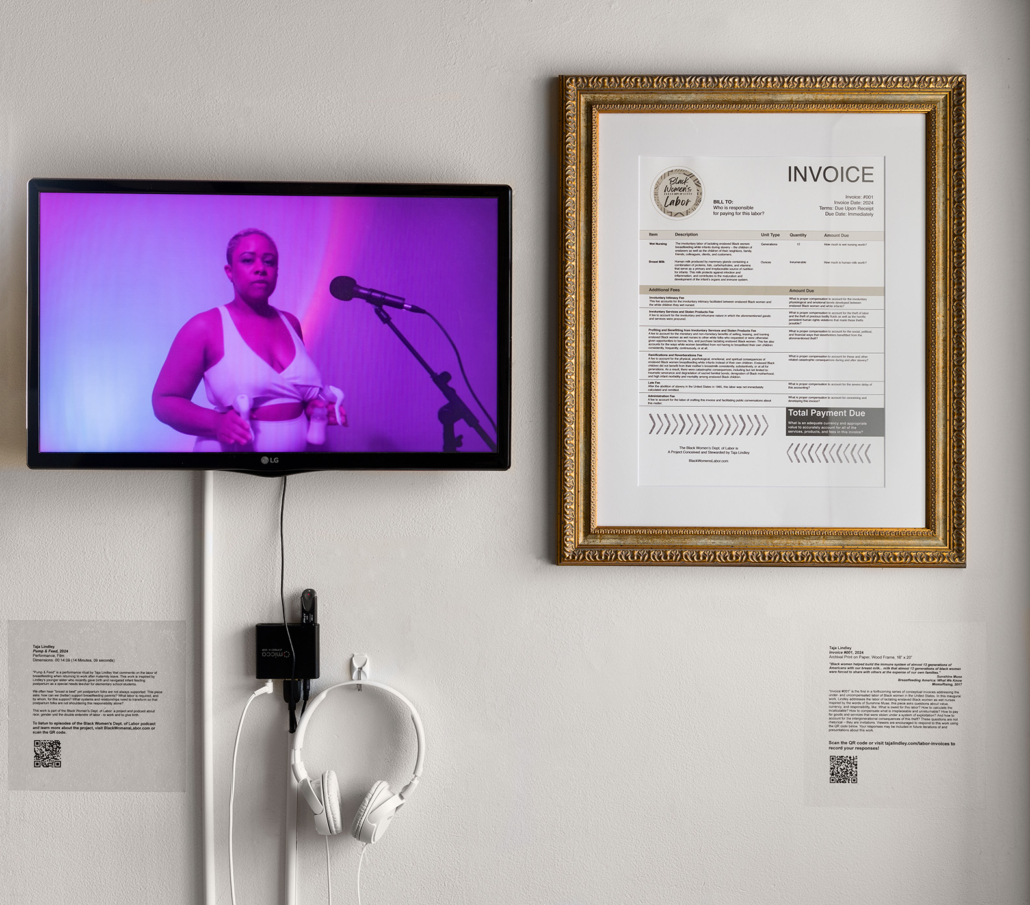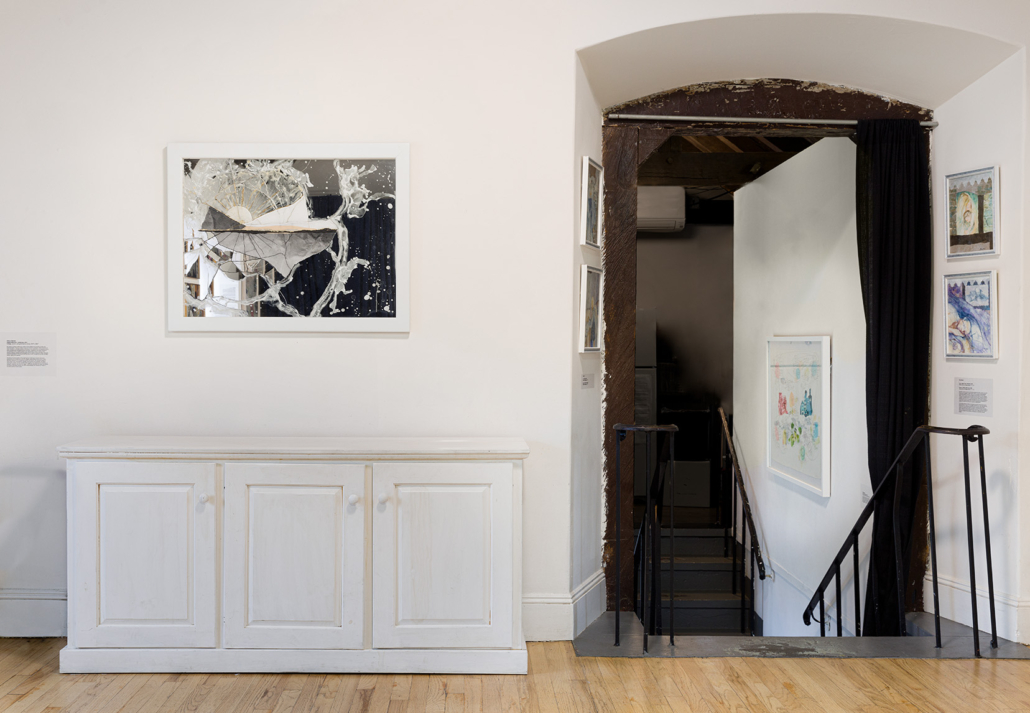This Exhibit is past. Visit our Exhibitions page for information on the current programming.
MAMA NEEDS A RAISE! Toward a Utopian Care Economy
Curated by Katherine Gressel of the Old Stone House and Shweta Bist, Kim Hopson and Jocelyn Russell of the Mother Creatrix Collective
March 24, 2024 – May 12, 2024
Opening Reception: March 24, 2024, 3:00 pm – 5:00 pm
Gallery hours Friday – Sunday, Noon – 4 pm
Participating Artists:
*Mother Creatrix Collective Member
Enjoy this virtual tour slide show of the exhibition, photographed by Etienne Frossard.
Public Programs:
Sunday, March 24, 3:00 pm – 5:00 pm: Opening Reception
Sunday, April 14, 3:00 pm – 4:30 pm: Pump & Feed: A Call & Response Community Conversation (Virtual Event)
Thursday, April 18, 7:00 pm – 9:00 pm: Making It What We Need: Reimagining Creative Community for Parents in the Arts (Virtual Event)
Sunday, May 5, 4:30 pm – 6:00 pm: Closing Event
This group exhibition, in partnership with the Mother Creatrix Collective (MCC) addresses such questions as: What do artists/caregivers most need and want? What would comprise a “Utopian” society that better recognizes and supports both caregiving and art-making? What role can artists play? The exhibition includes the six members of MCC who were invited to respond to these prompts, plus ten additional artists whose work addresses these themes from diverse perspectives. Mama Needs a Raise! builds on both MCC’s previous shows about the unique challenges (and strengths) of artist mothers, and OSH’s ongoing Brooklyn Utopias series that invites artists to envision ideal communities. In a country with few supports for families (or, increasingly, for family-building) and even fewer for artists with families, the title Mama Needs a Raise! suggests not only the need to adequately compensate caregivers and artists alike, but the need to raise their perceived value, visibility and collective voice.
Many of the exhibiting artists, including Shweta Bist, Bakula Nayak, Taja Lindley and Victoria Smits unpack the myriad forms of unpaid “invisible” or “emotional labor” (in the words of author Eve Rodsky) that parents face at all life stages. These were exacerbated during the pandemic–whether managing grueling breastfeeding and pumping schedules; teens’ physical and online safety; or care for aging parents. Throughout the exhibition, traditional domestic materials and settings are disrupted with bold proclamations of time and value, and in some cases (as in Allison Belolan’s cracked mirror landscape), frustration and rage, suggesting the importance of art as a vehicle for simply being seen and heard.
Some artists address the influence of such factors as race, sexual orientation, income, immigration status and disability, including finding moments of strength and celebration. Ashley January’s portraits and recordings of Black mothers are aimed at “raising awareness around the Black Maternal Health crisis, but also creating a platform that acknowledges the lived trauma, survival, and joy found afterwards.” Anna Grevenitis’s photographs ask viewers to meet her gaze as she parents her daughter with Down Syndrome. Kim Hopson’s new videos and collages chronicling her experiences as a disabled caregiver question the very definition and pursuit of perfection, asking, “ where do we other-carers fit in the wider construct of a Caregivers Utopia?”
Other projects question a persistent “heteronormative family structure” (as in a new outdoor installation by Sara Shaoul) or the status quo of an art world where for “too long” we have had to “choose between having a successful career in the arts and having a family,” in the words of exhibiting artist Christa Donner’s Cultural Reproducers Manifesto.
Donner and several other artists present real or imagined “Utopias” encompassing personal, community and policy goals. Maggie Wong examines her and her peers’ experiences of being raised in a communal childcare environment in support of anti-capitalist organizing. For Caroline McAuliffe, newly afforded extended paid leave and LGBTQIA+ parental rights policies in the State of New York enabled the moments of repose and play depicted in her photographs. Orly Cogan’s hand stitched embroidery on vintage apron titled Made In America depicts U.S. Senator Kirsten Gillibrand and her children and evokes the ongoing fight for additional legislation that supports families. Nina Wood’s intimate watercolors include collaged elements representing necessary supports for both caregiving and creativity and alluding to the domestic architecture of the Old Stone House.
The majority of exhibiting artists are either spearheading or collaborating with concrete efforts toward community and advocacy for caregivers. This includes the Mother Creatrix Collective itself, whose artists collaborated on a site-specific delft tile installation led by Jocelyn Russell with various “Utopian” symbols. Betty Yu partnered with the National Domestic Workers Alliance to interview immigrant nannies advocating for better working conditions. Taja Lindley’s Pump & Feed performance and invoice addressing the under- and uncompensated labor of Black women in the United States are part of her Black Women’s Department of Labor project and podcast examining the intersection of race, gender and labor. Works by Yu, Lindley and others contain specific calls to action, including inviting visitors to document and share their own thoughts and experiences through drawings, questionnaires, public workshops and a “Making Labor Visible” website by Victoria Smits where participants can gps-map their domestic tasks and receive a visual documentation.
Though most artists in Mama Needs a Raise! eschew attempts at perfect, all-inclusive solutions for the range of complicated issues caregivers face, together they forcefully assert that these issues need attention, and present different models of how artist/caregivers can help foster personal, communal and societal change.
BACKGROUND/CONTEXT:
Caregiving is a key component of the social, economic and political fabric of any society, as a foundational aspect of human development and raising productive citizens. According to the Center for American Progress, the Covid-19 pandemic in particular “made it abundantly clear that child care is the work that enables all other work.”
However, in a society where influence aligns with wealth, and capitalist frameworks benefit from invisible household labor, the significance of care work remains obscured and overlooked. This often has unfavorable consequences on the health and financial adequacy of caregivers. In the United States, public policies to support families are almost nonexistent, with no universal childcare or paid family leave, while childcare costs deplete a significant percentage of families’ earnings and professional caregivers earn some of the lowest wages of any profession, according to the Department of Labor.
According to Artnet, these problems are “amplified in the art industry, which is largely composed of nonprofits, small private businesses that lack human resources departments, and artists and freelancers who may receive no benefits at all.” Moreover, like caregiving work, the work required of artists to nurture both their careers and the creative economy (such as concentrated studio time, applying for opportunities, or traveling for exhibitions and residencies) usually comes with no guaranteed compensation, making the high cost of childcare especially hard to justify.
Note while those who identify as mothers and women have typically borne the brunt of care work in the United States, we acknowledge that caregivers across the gender spectrum face many of the same challenges.
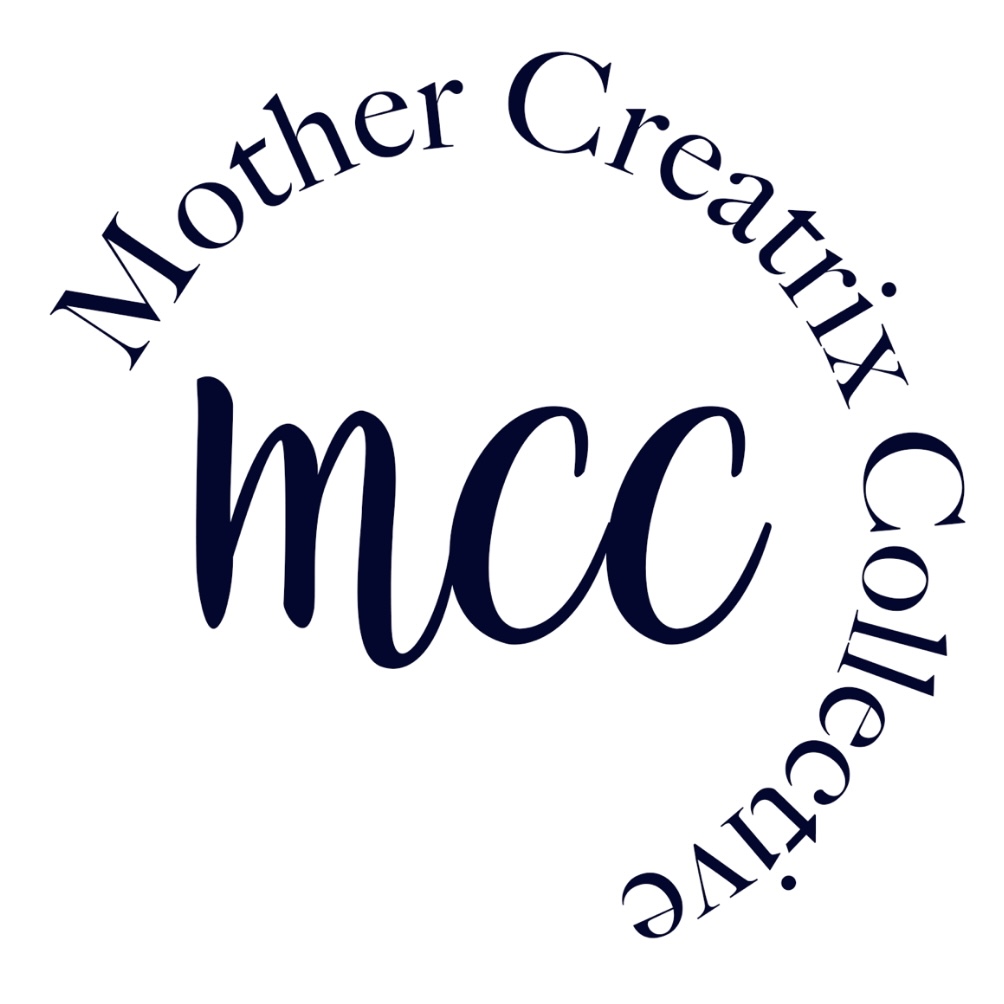
ABOUT MOTHER CREATRIX COLLECTIVE
The Mother Creatrix Collective (MCC) is a group of artist mothers who work together to support each other’s artistic practices by creating exhibition opportunities. Since its founding in 2022, MCC has organized 3 exhibitions to date, and offers regular critique and collaboration opportunities for its members. Visit www.mothercreatrixcollective.com to learn more.
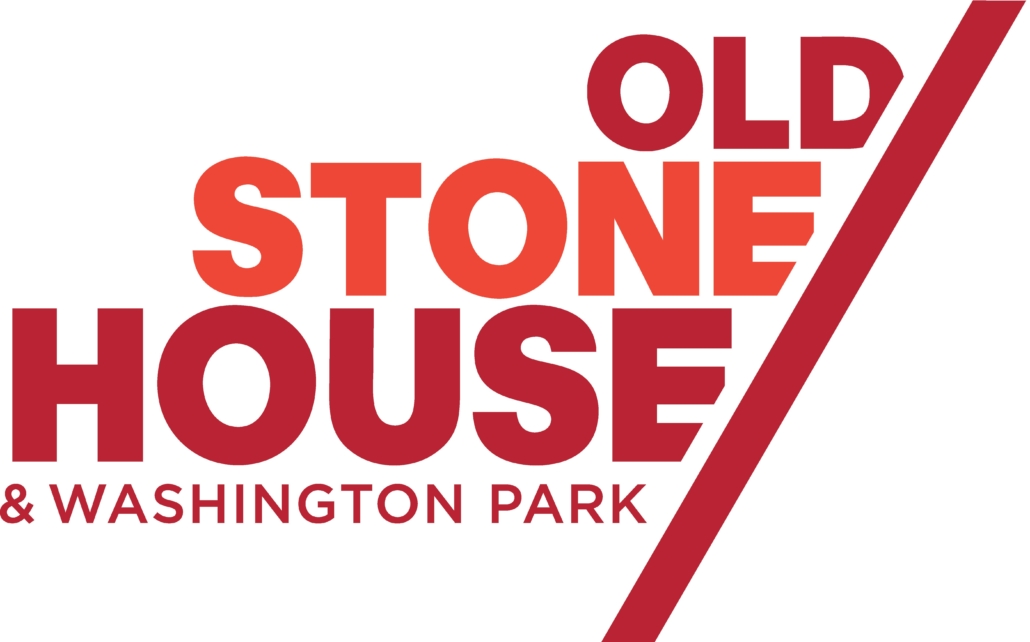
ABOUT THE OLD STONE HOUSE & WASHINGTON PARK:
The Old Stone House (OSH) is a reconstructed Dutch colonial farmhouse located in Park Slope’s Washington Park/J.J. Byrne Playground. The playground and house restoration were first developed by Robert Moses in the 1930s, but the land surrounding the house made history long before then as the site of the 1776 Revolutionary War Battle of Brooklyn, and as a 19th Century Brooklyn Dodgers practice field. OSH is at the crossroads of ancient Lenape roads, adjacent to the historic town of Marechkawick, and we acknowledge this land’s original inhabitants.
Today, OSH hosts history and environmental education programs as well as cultural and family events, with its surrounding J.J. Byrne Playground attracting thousands of children daily and its education programs serving myriad local school and after-school groups. We aim to create an inclusive exhibition space for family audiences and artists with care responsibilities, holding daytime/weekend art openings and family-friendly and accessible outdoor public programming options during the majority of our exhibitions. We are also committed to paying artists according to W.A.G.E. standards and providing installation and material support. Visit www.theoldstonehouse.org to learn more.
This exhibition is made possible, in part, by the New York City Department of Cultural Affairs and the New York State Council on the Arts with the support of the Office of the Governor and the New York State Legislature. Image credit: Shweta Bist.


